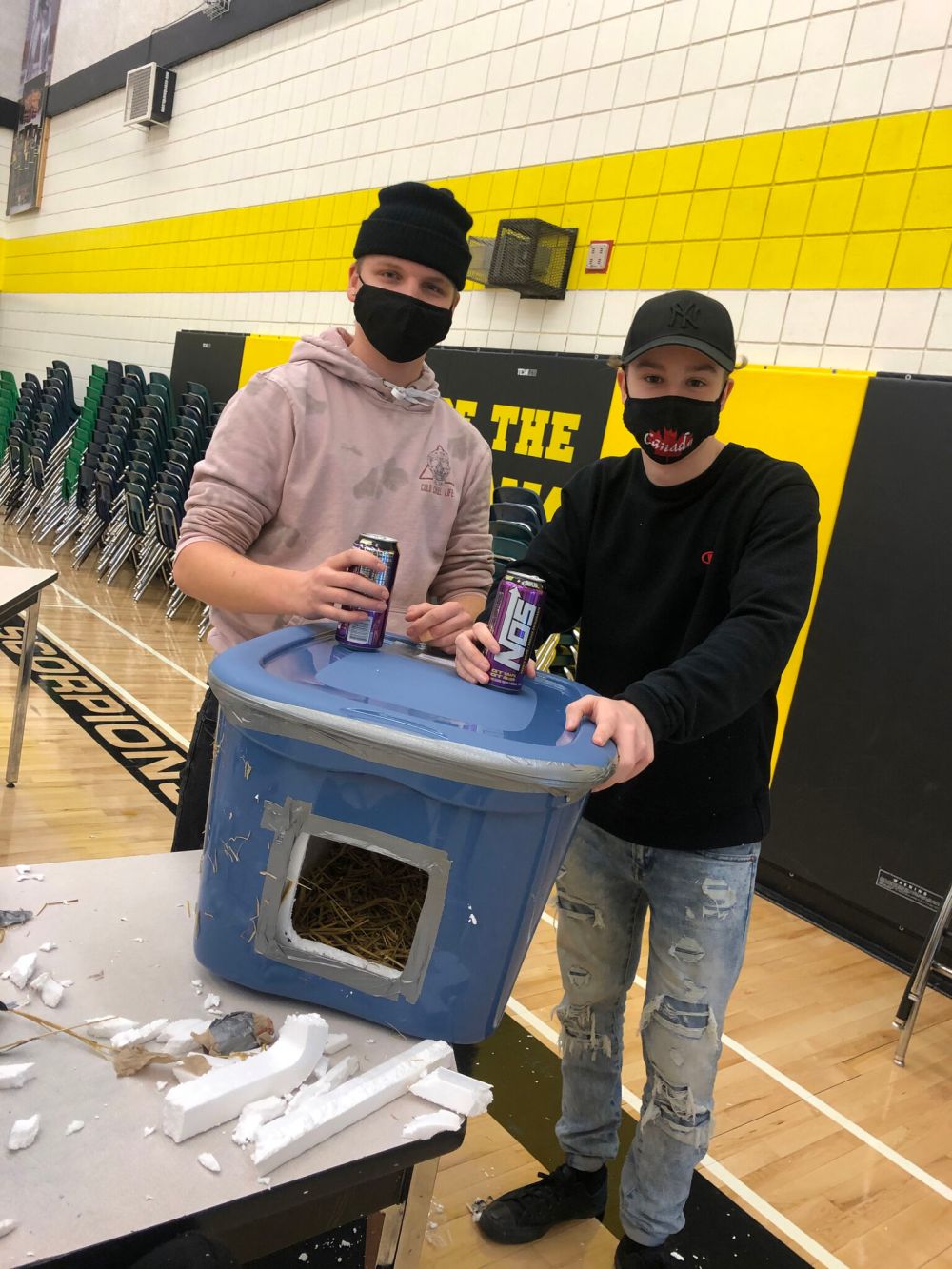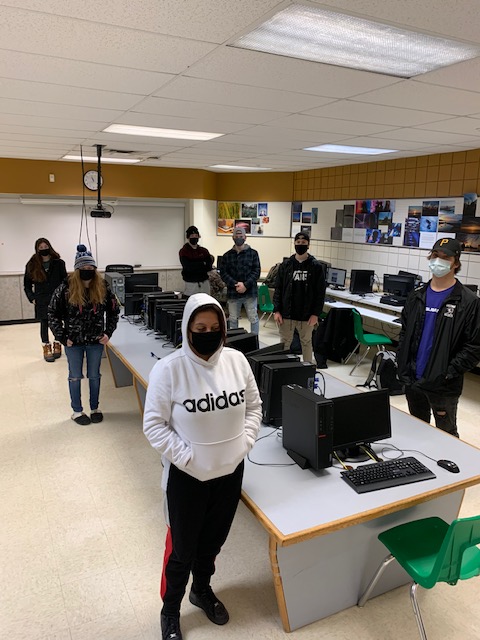Lorette students champion local causes through CRAVE
Advertisement
Hey there, time traveller!
This article was published 17/02/2021 (1614 days ago), so information in it may no longer be current.
A unique program proves students have plenty to offer when it comes to bettering their communities according to team mentors of the CRAVE (Career Readiness and Amazing Volunteer Experience) project.
A group of College Lorette Collegiate students completed the program, creating cat shelters for the stray cat population, helping cats get adopted and mapping local trails and raising awareness about the effects of development on these public assets.
This was the second year CRAVE, offered by Career Trek and funded by Canada Service Corps, took place in the province, but this year looked very different thanks to COVID restrictions. The goals however, remained the same.

“The two hopes of the project are to help students explore different careers and then also to give them experience addressing a challenge that they identify in their community,” Jasmine Wiens, project team mentor said.
Both groups spent the first month and a half on online training before beginning the project phase for the final half of the course.
The first group focused on addressing the high stray and feral cat population in Lorette. That meant creating posters to encourage adoption, and informational posters that inform the community on what to do if they spot a stray cat. They also worked on building cat shelters to support existing work in the community.
The second group focused on the potential harm to community trails, known locally as the “monkey trails”, that are threatened by development. The group focused on mapping the trails and highlighting the importance of them for the community.
Both groups presented their findings in a Jan. 25 Zoom presentation.
Wiens said she was impressed with the students’ hard work.
“I thought it was neat to see how the students were able to identify something in their community and something that was really unique to Lorette,” she said. “Neither of their chosen topics were concerns that we as people who don’t live in Lorette could have chosen.”
Wiens said the projects came from big ideas and concerns, biodiversity in the environment regarding the cat problem and redevelopment regarding the trails.
“They managed to find something attainable that they were able to do and pull off in a short amount of time and to actually be able to do it, rather than just feel overwhelmed,” she said. “Big concerns can be addressed in small ways that build on one another.”
Wiens said she was impressed with the projects. “It was inspirational in the way they adapted to the challenges that we faced in the pandemic while still addressing real concerns in their community in substantive ways.”
Becky Matthews was the assistant team mentor for the group that dealt with the cat issue. She said the project was selected by students, and adjusted during the process.
“Initially what we wanted to do was raise money for some shelters and women in town who are taking care of these cats,” she said. When that proved difficult because of the pandemic, the group instead took on the task of creating posters and building some cat shelters themselves.
Matthews said the project idea initially took her by surprise.
“I was not aware of this being an issue in the least,” she said. “They took it in a completely different direction than I ever would have expected and I’m honestly overwhelmed with the work that they’ve done. They have impressed me so much.”
Matthews said the project gave the students a chance to find out what they liked to do, as well as what they didn’t.
“Knowing what you don’t like is equally important as what you do like,” she said.

Aidan Perreault was the assistant team mentor for the group that mapped the monkey trails in the community. He said virtual learning was a challenge.
“It’s tough to know where the students are at and what they’re thinking when all that they are to me as far as representation is concerned, is a bunch of initials that occasionally do or don’t speak when I ask questions,” he said of the Zoom format. “It’s a lot harder to have these more general content based discussions when you don’t get the real body language and feedback of the students you’re talking to.”
But those challenges were overcome, thanks to the diligence of the students themselves.
“The participants have continually impressed me, when it comes to their hearts being in the right place, first and foremost, they really seem to have an interest in their community,” he said.
Perreault said the idea came from a single student who had been thinking of the trails on his own time, and his classmates were excited to take it on.
And while the project was scaled back, focusing on mapping the trails instead of their original plan of meeting with Lorette council to conclude the project, Perreault said he hopes each student is proud of the role they played.
Tanya Regehr is the program coordinator for Career Trek, Youth Initiatives of which CRAVE is a part.
She said in addition to Lorette’s program, there is one in Brandon, and several in Winnipeg this year.
“It’s always inspiring to see what the youth come up with because that’s definitely something that we strive for, is that these projects are totally youth driven,” she said.
The program normally includes in-person instruction and tours of post-secondary campuses. COVID restrictions forced the scaled-back approach this year.
“It’s worked really well,” she said. “The youth are still very much engaged as much as they would have been in person as well.”
Regehr said in addition to the skills gained by the students, CRAVE shows just how invested youth can be in their communities.
“It doesn’t have to come from city council or adults…,” she said. “Youth come up with really amazing ideas and they can put something into action in a very short period of time.”
